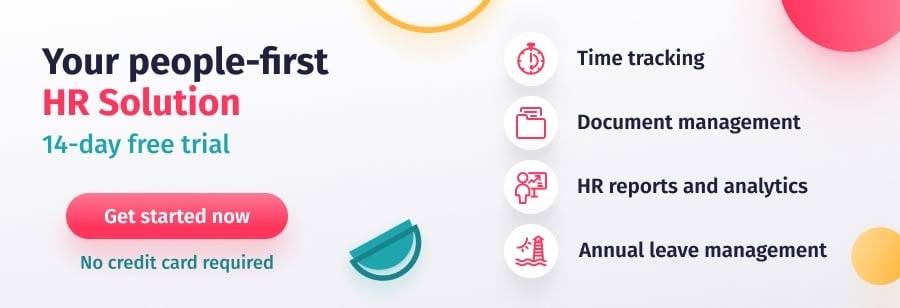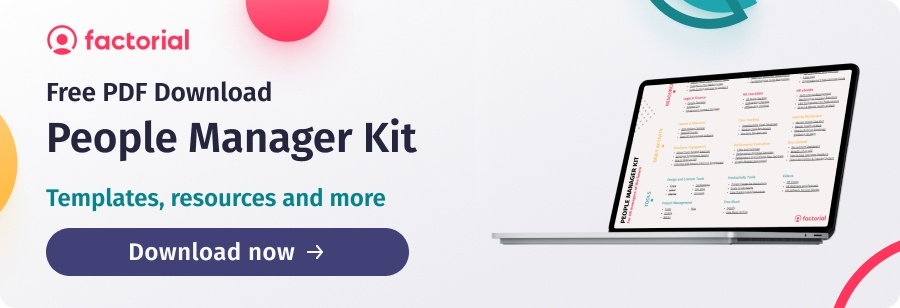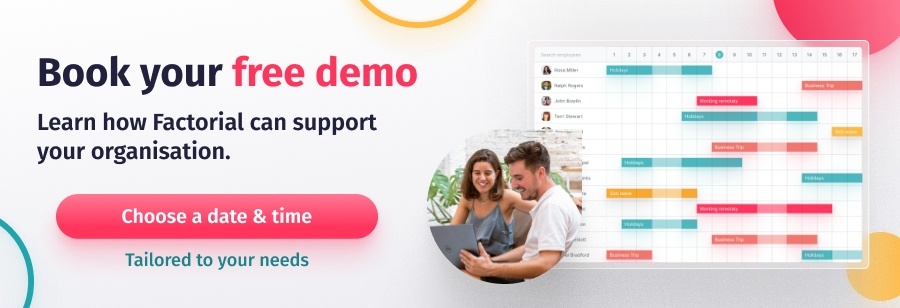It’s been tough to fill job roles across most businesses for the last few years, and the nonprofit sector is no exception. A CharityJob study showed that of 40,000 job postings, the number of people applying for each role fell from 100 in May 2020 to just 24 in July 2021.
If your nonprofit organisation is seeing a slump in applications for roles since the Covid pandemic, it’s more important than ever that you retain your top talent – if you don’t, positions might end up staying vacant for extended periods, leaving you struggling to achieve your mission and goals.
So what can you do to ensure you keep the people you have? There are plenty of challenges facing the not for profit sector right now, but also lots of opportunities. Make sure you harness these talent management strategies for your nonprofit organisation to retain your talent and recruit the best people when you need to.

Challenges Facing the Nonprofit Sector
Covid and the cost of living crisis have left everyone feeling the pinch, in more ways than one – and charities, advocacy groups and other non profit organisations are feeling it more than private sector businesses:
- Economic pressures reducing giving: People are far less likely to donate to not for profits due to the cost of living. A Charities Aid Foundation (CAF) study showed that in September 2022, more than 3.2m people reduced or stopped a regular payment to charity because of increased living costs.
- Changing donor behaviour: Individual donors are more likely than ever to donate via Direct Debit or standing order, but research shows that they won’t adjust their Direct Debits to account for inflation. Nonprofits need to invest in their digital capacities to make up for the loss of cash donations.
- Reduced ability to meet demand: CAF found that only 49% of nonprofit organisations were confident that they had the funding to meet current service demand, and 24% said they had reduced services but had no room to cut further.
- Staffing crisis: The VSCE Sector Barometer shows that 36% of charities struggle to recruit the staff they need, and workloads for existing staff increased exponentially. This indicates how important it is that nonprofit organisations retain their people by having an effective talent management strategy.
Opportunities for Nonprofit Organisations
Luckily, there are still plenty of opportunities for nonprofit organisations to take hold of – so make sure you incorporate these into your nonprofit business plan and talent strategy.
- Tax exempt status: Make sure your accountants are maximising the financial benefit that comes with being a nonprofit. The government says that most nonprofits don’t need to pay tax on most of your income and gains, as long as you use it for ‘charitable expenditure’ – that includes donations and profits from trading.
- The digital revolution: Digital is now essential for any nonprofit to start operating. There’s a huge opportunity for new and evolving charitable organisations to invest in IT and online solutions to increase the money earned from donations, provide relief to service users and offer more aid to people for public benefit. But many nonprofits are still falling short – while 80% of charities with an income of £5 million or more said they’d invested in IT, only 64% of smaller nonprofit organisations did the same.
- Young volunteer boom: Research by Pro Bono Economics shows that nonprofit organisations could benefit from up to 2.5 million new volunteers aged between 18-34 this year. Make sure your talent management strategy considers the impact of volunteers on your nonprofit and what you can do to retain them, as well as your paid staff.
What is Talent Management?
Talent management is the term used to describe how an organisation recruits, develops and retains talent. Every organisation should have a talent management strategy, whether they’re a nonprofit or for profit organisation.
Talent management deals with every stage of the employee lifecycle, and each part should have its own strategy.
Ultimately, talent management aims to attract top talent and nurture those people to grow within your nonprofit organisation.
Nonprofits with well-thought-out talent strategies generally see higher employee satisfaction, lower turnover and faster mission outcomes.
Here are 8 easy strategies that you can start putting in place right now to help improve your employee retention and recruit top talent in your nonprofit organisation.

1. Align Your Talent Management Strategy With Your Organisation’s Mission and Values
While your goals and targets will be different, your talent management strategy will be similar to that of a private sector company. It needs to align with your mission and values, so you’re always focused on getting the most out of your people to help you achieve your goals.
When you’re beginning to construct your talent management strategy, consider the following factors to ensure your strategy is in line with your mission:
- Internal and external factors that could slow your organisation’s progress – e.g. an internal factor could be fundraising activities, while an external factor could be funding sources
- Your timeline for achieving your goals – when do you want to release that new initiative into the community?
- What will help you to move faster in achieving your goals – e.g. more paid staff, more funding through government grants
- Whether you have processes in place to help you leverage opportunities – can you react quickly? Do you have the resources if a new opportunity arises?
It can be useful to do a SWOT analysis (strengths, weaknesses, opportunities and threats) to help you identify specific issues that could help or hinder your nonprofit organisation’s ability to achieve your goals.
Try to move from your overall mission into smaller, targeted goals that will help propel your not for profit organisation forward. Then you can use these to construct your talent strategy.
2. Turn Your Mission Into Objectives
Now you’ve broken down your mission into smaller goals, you can turn them into action-based objectives that will help you identify and meet your talent needs.
Work with your leaders and executives to come up with specific initiatives with clear, measurable goals so you can monitor your progress at every step.
For example, The Trussell Trust’s mission statement is clear: they want a UK that doesn’t have the need for food banks. On its own, that statement doesn’t tell us much.
But when you look at their strategic plan, you can see how they’ve broken their mission down into priorities for the next 5 years – and this will help them to see where they need to plug skills gaps or recruit new talent.
For example, their ‘changing minds’ goal focuses on increasing public understanding and empathy – so they may have identified the need for more people with marketing skills to help them get their message out there, make more people aware of their mission, and therefore drive more donations.

3. Identify Skills Gaps and Talent Development Needs
Now you have a clear picture of what you want to achieve, it will be easier to see skills gaps in your teams.
Conduct performance reviews and set goals for your team on a group and individual level. Using a competency-based approach will help you to set specific goals for your team members and offer appropriate learning and development opportunities.
While this approach will help you achieve your not for profit organisation’s mission, it’ll also help you to retain top talent – if your high-potential employees feel like they are being invested in with extra training and progression opportunities, they’re more likely to stick around longer.
4. Build a Solid Culture
Like for profit organisations, it’s crucial that you build a solid organisational culture. It’s no use leaving it to chance – you need to be intentional about building a great culture that drives engagement and a sense of community from your people.
While some things might be tough to hear, get feedback from your current teams – what do your people love about working in your nonprofit organisation? What do they dislike?
It’s also important to ensure that you keep your culture developing as your nonprofit grows – when you make new hires, think about culture ‘add’ instead of culture ‘fit’ to aid diversity – you should also use this to shape your learning and development programmes.
5. Develop Strong Programmes for Nurturing Top Talent
Your top talent will leave if you don’t nurture them and help them progress in their careers. It’s vital that you develop high-potential employees to help them stay motivated – and in turn, this will help you achieve your organisational goals.
Create personalised learning and development programmes that focus on your team members’ skills gaps and, if they are high-potential, what they need to do to move into leadership roles within your not for profit organisation.
Consider succession planning – don’t wait for your top leaders to leave or retire before thinking about who could take their place. Make sure you assess your teams and see if anyone is suitable for a role at executive level or on the board of directors – and if not, what do you need to do to recruit someone or get an internal candidate up to scratch?

6. Consider Your Compensation and Benefits
Nonprofits typically find that their budgets don’t stretch as far as those in other types of businesses, and this is often reflected in staff salaries.
A report by the Living Wage Foundation shows that over 17% of third sector workers earn less than the real Living Wage, compared with 6% in the public sector.
It’s important to review your compensation and pay scales regularly to ensure you’re competitive and fair. It can put your reputation at risk if you don’t pay people a fair wage, or offer them benefits like flexible or hybrid working.
Do your research on other charitable organisations and nonprofits that are similar to you and see what they offer employees in pay and benefits to stay competitive.
And it’s always worth listening to your people – consider carrying out surveys to find out what they want and what they would benefit from to improve your rewards programme.
Don’t assume that what you’re reading in the press is necessarily the most important benefit to your team – while ‘more money’ will always be a frequent request, you’ll find that all teams are different in what’s most important to them.
7. Share Your Plans With Stakeholders
The best way to get the most out of your talent strategy is to get stakeholder investment. Whether your stakeholders are business entities, donors, national charities or a mixture of all three and more, present your research and findings to them.
Show your board members the strengths and weaknesses in your current strategy and what your plans are to develop it further. Ask for their input – your stakeholders will have a wealth of experience that you can draw from.
Sharing your plans gives transparency and accountability to everyone in your nonprofit organisation – and don’t forget, your team members are internal stakeholders, so make sure you communicate your new talent management strategy to them when you’ve developed it too.
8. Review Your Talent Management Strategy Regularly
You can’t ‘set and forget’ your talent strategy – so we’re sorry that we’re adding another task to the HR professional’s never-ending list of jobs!
It’s important to regularly review your people strategy. What’s working? What isn’t? What’s missing?
Use key HR metrics to measure the success of your talent management strategy. Just a few KPIs you can measure to see if your talent strategy is working are:
- Internal promotion rate
- Employee turnover rate
- Retention rate
- Employee net promoter score
Use these metrics to determine the impact that your strategy is having on your people and your nonprofit as a whole. They will help you to identify the strengths and weaknesses of your talent management strategy as well as benchmark your organisation both internally and externally.
The Takeaway
Talent management strategies in not for profits aren’t far off those in most businesses. The key differences will be your goals and how you’ll raise money to achieve them, but the main focus will be the same: you need a clear set of values and mission that everyone in the organisation will work towards.
The key is to develop your current talent by constructing learning and development programmes that help keep them invested in your nonprofit and plug skills gaps, and to build a culture that people want to be a part of for the long term.


